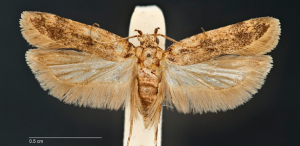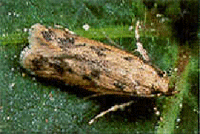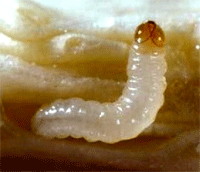The pink bollworm is an insect which is a pest of cotton farming. The pink bollworm is varies in size. The rare size of pink bollworm is 3/8 inch in length. Pink bollworm is grey in color with oval shaped wings. The wings are strongly fringed at the edges. The pink ball warm’s wings are pointed at the tip. When at rest, the moth’s wings are folded close to the body. Under magnification, palpi can be seen emerging from the lower front part of the head. In contrast to most other moths, the palpi of pink bollworm are relatively thick, curved upwards and have light and dark colored bands. Also, the pink bollworm moths have a few stout hairs which project forward from the base of the antenna. Pink bollworm moths will typically live 4 to 8 days.
Pink ballworm eggs seen rarely and they are samll in size and yellow in colour. Eggs are usually laid singly inside the bracts of squares and under the calyx of bolls. Eggs normally hatch in 4 to 5 days.
The pink ballworm is white in colour but it turns pink as their age. At hatching, the larvae have a dark head, but as they mature, the head becomes yellowish-brown in color. The most effective means of managing pink bollworm in season is to plant cotton containing genes from the bacteria. These genes produce proteins that are toxic to most leaf and fruit feeding caterpillars after ingestion.
The pink bollworm is native to Asia, but it found in most of the world’s cotton-growing regions. It reached the cotton belt in the southern United States by the 1920s. It is a major pest in the cotton fields of the southern California deserts. The female moth lays eggs in a cotton boll, and when the larvae emerge from the eggs, they inflict damage through feeding.



Leave a Reply